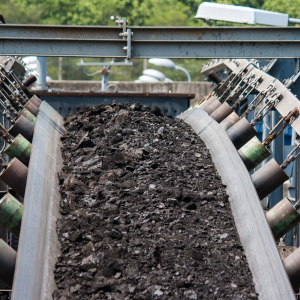In the closing days of the presidential campaign, Donald Trump has returned to Michigan, championing his plans to bring back manufacturing jobs. Revitalizing blue collar industry has been a cornerstone of his campaign for the last year, but on the subject of one closely-related industry — mining — Trump has made few comments. And after telling a town hall this spring that, “We’re going to put a lot of coal miners and coal companies out of business,” Hillary Clinton has said even less. Mining under-performed the rest of the economy over the last year, losing tens of thousands of middle-class jobs even as overall hiring grew.
A Bureau of Labor Statistics jobs report released on October 7 showed that 2016 has been rough on the mining industry. After peaking in September 2014, during the height of drilling in North Dakota’s Bakken oil fields, the industry has sloughed some 223,000 jobs. Since then, hiring has remained largely “unchanged,” in the words of the BLS report and the industry has yet to recoup these losses.
Mining has a large impact on the US economy. The mining industry encompasses not only the extraction of coal and fossil fuels, but also metal ores, and minerals. A report released by the National Mining Association in September found that mining directly employed 565,000 people in 2015. Of these jobs, slightly less than 150,000 came from coal, 92,000 from mining metal ores, and the remaining 327,000 from non-metallic mineral mines.
Slow hiring is a result of a variety of factors, including falls in the price of copper and some other ores this spring, low oil prices, and EPA regulations which forced some coal-burning power plants to close.
While it comes in sharp contrast to how many picture the industry, mining jobs lost to environmental legislation and plummeting commodities prices are often white-collar, well-paid positions.
Despite the hillbilly connotations some types of mining still retain, today’s miners aren’t “shoveling coal to make a poor man’s dollar,” like in the words of Loretta Lynn’s classic country song. Instead, the mining industry increasingly hires engineers, geologists, and other college-educated workers who earn middle-class incomes.
“The job market has tightened up considerably over the last several years,” says Darrell Sawyer, who heads the career services department at South Dakota School of Mines & Technology. “Coal especially is really tight these days.”
This means that companies are offering fewer summer internships to students pursuing degrees in engineering and also that some graduates are receiving offers of internships rather than full-time positions.
Instead, graduates are turning to other types of mining, including ores such as gold and copper, as well as more general commodities like salt. Last year, while students received offers from firms like Peabody Energy and North American Coal, some also wound up working for more surprising companies, such as Cargill.
Sawyer, who has worked for the school for eighteen years, acknowledges the downturn in the job market, but is confident that an upturn will follow. He noted that students have been able to find positions, though fewer of them are receiving multiple offers than in previous years.
Lance A. Roberts, a professor at the school with ties to the industry, noted that “over the last couple of years, fewer graduates have been placed into the coal and gold sectors, while more graduates went into aggregates and industrial minerals.”
“These [changes] were a result of the economy,” he said.
The shift shows that there is stagnation in the sectors of the mining industry which have generally been higher earning. The NMA report calculated median incomes in different mining subsections using data from the Bureau of Labor Statistics. They found that workers in coal mining earned an average of $83,600 in 2015, while those in metal ore mining fared slightly better, with an average annual salary of $88,000. Non-metallic minerals was the weakest sector, but workers there still earned an average annual salary of $61,800, comfortably higher than the US median income of $56,500.
The present job market shows more openings in these minerals and ores, and fewer in coal.
Like all markets, mining and commodities experience general fluctuations. However, the present market in minerals and harsh regulatory environment has suppressed hiring in mining. And despite the stereotypes, the jobs lost are white-collar, rather than blue.

